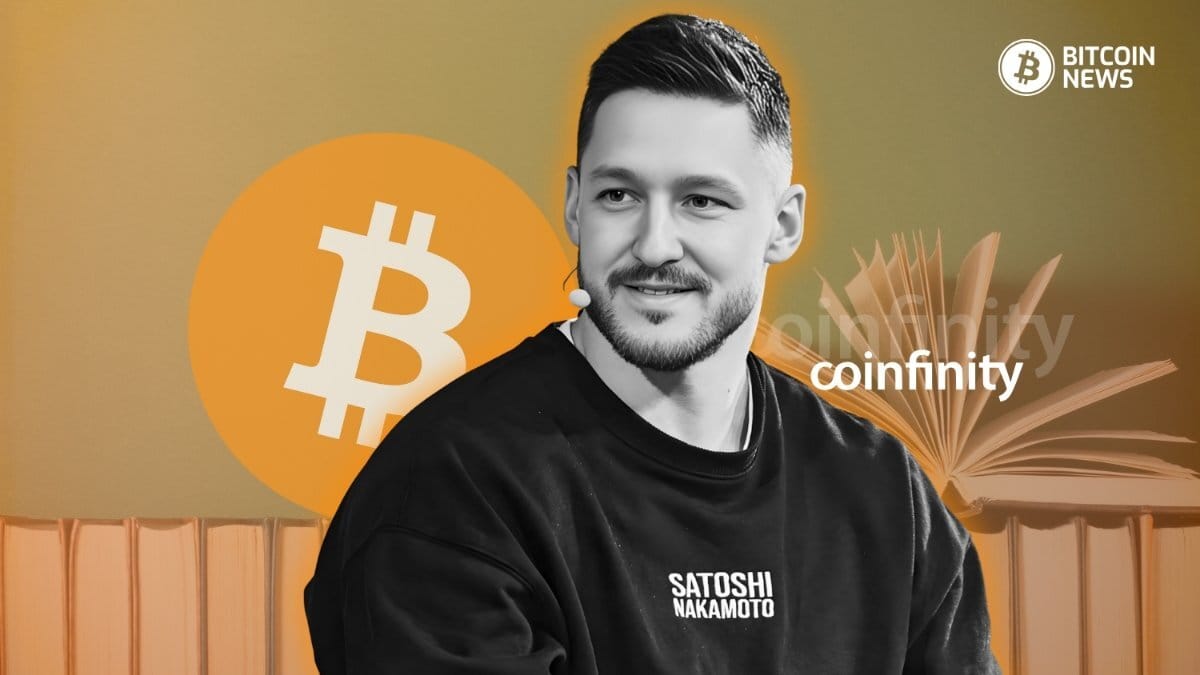While most Bitcoin companies chase quick wins with flashy marketing and complex trading features, Coinfinity is taking a different path. The Austria-based company has built their entire business model around something most brokers treat as an afterthought: education.
Founded on the principle that Bitcoin adoption requires understanding, not just access, Coinfinity offers something great in the Bitcoin space: a broker that actually wants you to take your bitcoin off their platform.
Their Bitcoin Blinks educational series provides a self-custody-first approach, and Austrian economics foundation make them stand out in a crowded field of crypto casinos.

Coinfinity’s HQ in Graz, Austria
At the heart of this educational mission is Fab, Coinfinity’s Head of Bitcoin Education, whose journey to Bitcoin mirrors that of many who’ve found their way to Austrian economics through pure instinct.
“I always had the feeling that something in the world just doesn’t add up,” he told Bitcoin News when he sat down with us. “Something’s wrong, I don’t know what, but I felt like the foundation of our society isn’t quite fair, I just never knew what it was.”
Sound familiar?
That hunch eventually led him down a rabbit hole of geopolitics, monetary systems, and finally to Andreas Antonopoulos videos on YouTube.
“I basically disappeared from life for about a week, just watching those videos,” Fab recalled. But it wasn’t until he read The Bitcoin Standard that everything clicked.
“I remember it like it was yesterday, I closed the book and thought ‘Holy s***, now I get it.’ That was the moment. From then on, I was Bitcoin-only.”

Many of the best Bitcoin books are in English and translating them is important
Now as Head of Bitcoin Education at Coinfinity and co-founder of Aprycot Media (a German publishing house focused exclusively on Bitcoin), Fab spends his days helping others find that same spark.
And unlike most “crypto” companies, Coinfinity’s strategy isn’t driven by marketing gimmicks or token launches, it’s driven by teaching.
“Our goal is to create educational content that’s so easy to understand that people love sharing it,” Fab explained. “When they share it, they connect with us. Once they start understanding Bitcoin, they choose us to buy it.”
Most companies buy Google ads. Coinfinity builds minds. With their Bitcoin Blinks, 42 short, clear lessons covering everything from subjective value to seed phrases, they’re offering what most brokers won’t: context. Meaning. Philosophy.
“It became quite popular, and we think it’s way more effective for our brand than just buying ads,” Fab said.
And they don’t stop there. When it comes to custody, Coinfinity takes a radically different approach than most Bitcoin brokers.
“When you buy bitcoin from us, you always take custody, either in our in-app wallet where you control the seed, or your own hardware wallet,” Fab emphasized. “Even our lightning feature works the same way you always buy into your own wallet.”
That’s not just a slogan. It’s a core value of the company that runs so deep they’re willing to sacrifice user experience for it. “We never custody your bitcoin,” Fab said. “It’s one of the core values that you custody them yourself.”
Even as fees rise and UTXO management gets harder, Coinfinity stays committed to self-custody. They are open to optional custodial tools in the future, but always paired with education, and always encouraging users to take their bitcoin off-platform when the time is right.
“If we ever offer custodial services, it would only be to help users stack small amounts until they reach a meaningful UTXO size,” Fab explained.
The plan would involve accumulating smaller purchases monthly or weekly until users hit a threshold, maybe a million sats, then withdrawing to self-custody. “We don’t want to play games with your bitcoin. We don’t want to lend it out or earn interest on it.”

Coinfinity emphasizes on self-custody and education, even in its app
The challenge is real though. When new users first encounter Bitcoin, the technical barriers can be overwhelming. “Often causes problems with people just getting into Bitcoin who don’t understand what self custody is” Fab notes.
That’s why they built their in-app wallet, to smooth the onboarding while maintaining their self-custody values. “The in-app wallet was our first step toward optimizing user experience without compromising our core value of bringing bitcoin into self-custody,” he said.
“One of our taglines is ‘bringing Bitcoin to the people’ and we literally mean that. We want to bring bitcoin to them, not keep it from them.”
Another promising thing the company is doing in their operations is using AI to create more content, faster. Podcast scripts, educational summaries, internal tools, Fab’s even feeding Austrian economics PDFs into models to keep the tone on-brand and Bitcoin-only.
“We’re using these tools in our business development and marketing teams to generate more output with the same number of people,” he said. But the future looks even more exciting.
“Maybe one day we’ll have a tutor in the app where you can do a video call and ask ‘What is a Bitcoin address?’ and it will talk back to you naturally, going deeper as you ask more questions,” Fab explained. “That’s absolutely possible.”
The technology isn’t quite there yet for mainstream deployment in their app, but Fab is optimistic. “I’m sure that in the future, this won’t just be used for improving our internal workflow, but for enhancing the content itself,” he said.
It’s not a pipe dream. The tech is already close. The only thing missing is more Bitcoin-native data and companies like Coinfinity are quietly building that layer.
One of the favorite parts of these interviews is asking the builders in the space what they would ask Satoshi if given one question. When I asked Fab what he’d ask Bitcoin’s creator, he didn’t hesitate:
“Did you purposely build Bitcoin based on Austrian economics, or did it just happen by accident?
“All this monetization theory, Bitcoin being a store of value first, is this something you actually thought was possible and had in mind? Or was it just a lucky shot that accidentally gave us the best monetary properties?”
Because if Satoshi had built Bitcoin with a 2% inflation rate, like some other projects, it might’ve worked. But it wouldn’t have lasted.
“He could have made it with 2% tail emission, it still would have been decentralized. But then today, someone might introduce a coin with a fixed supply that could kill Bitcoin,” Fab noted.
Fab suspects the fixed supply wasn’t an accident. And thank God for that.
What’s remarkable about Coinfinity isn’t just their Austrian approach or their self-custody obsession, it’s how they’re proving that education-first Bitcoin companies can compete with the flashy crypto casinos dominating the space.
Coinfinity doesn’t serve U.S. customers. They’re focused on Europe, operating within EU regulations. But what they’re building, honest Bitcoin education, smart tools, and a relentless push for financial sovereignty, matters everywhere.






